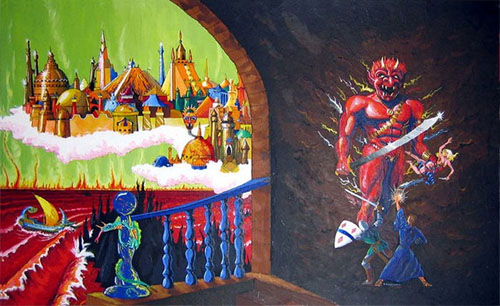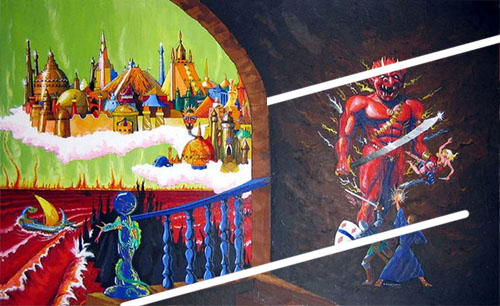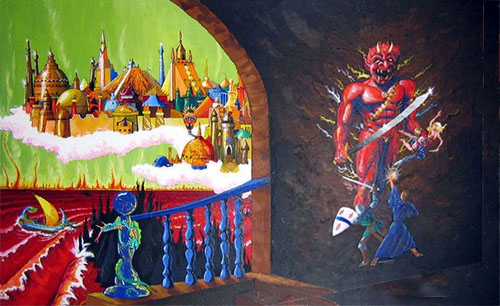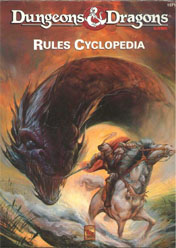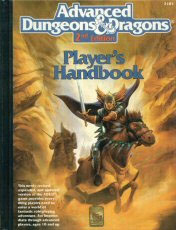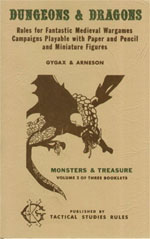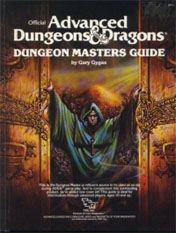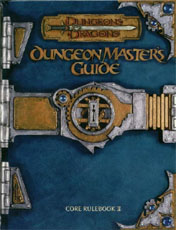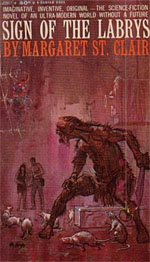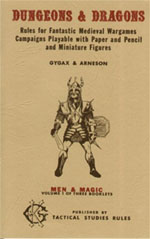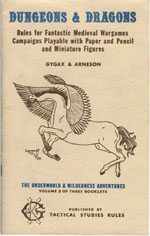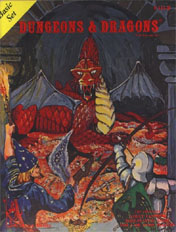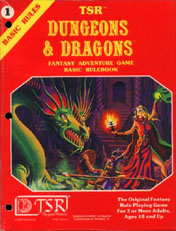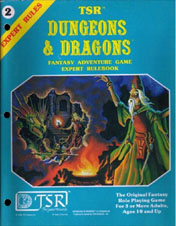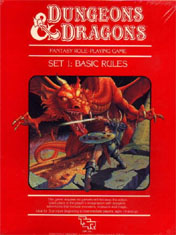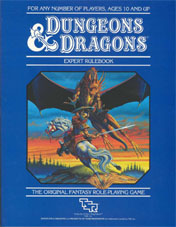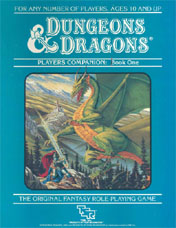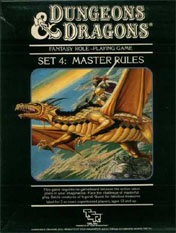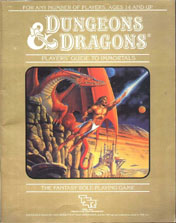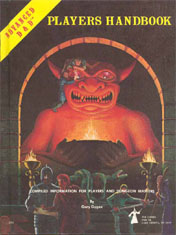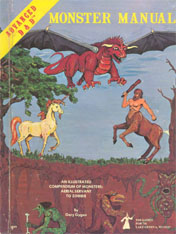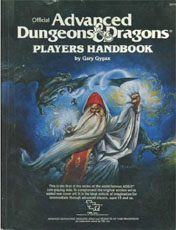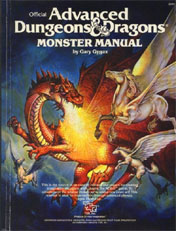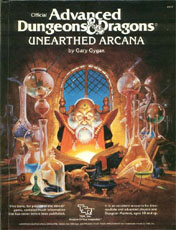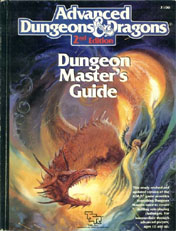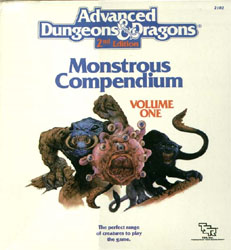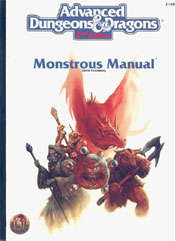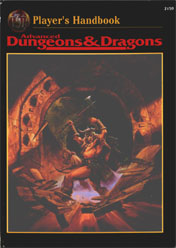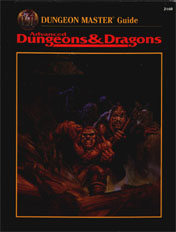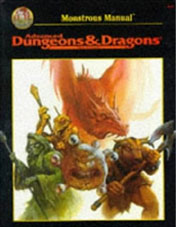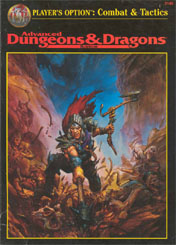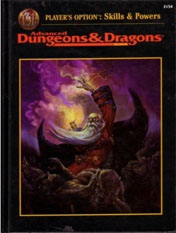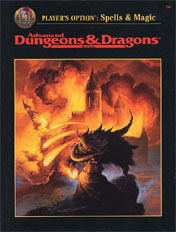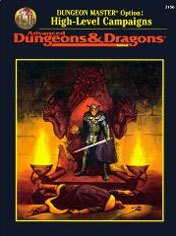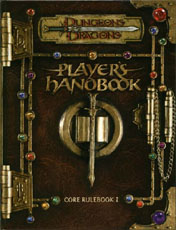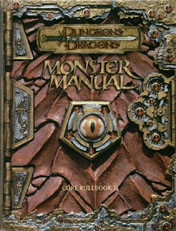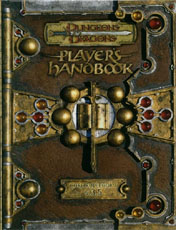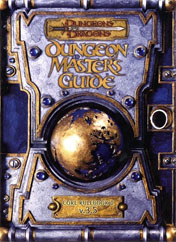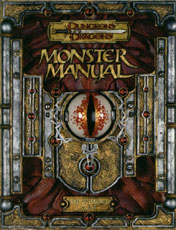One of the first reviews I ever received for a book I had written was for the mini-adventure The Dragon’s Wish, which was published by Fantasy Flight Games during the early D20 boom. The reviewer hated it. He had several reasons for doing so, but his biggest problem was that he felt that the encounters weren’t balanced: The adventure was designed for 9th level characters, but I had them encountering, among other things, a primitive tribe of kobolds (low CR) and a pair of extremely powerful stone golems (high CR).
Now, The Dragon’s Wish was one of my first published works and it was hardly perfect by any stretch of the imagination. But there were two main reactions that I had to the review.
First, I was frustrated because the reviewer had clearly failed to understand what the adventure was about. He had approached it as some sort of hack ‘n slash affair, but the module wasn’t designed with combat in mind. At the beginning of The Dragon’s Wish, the PCs are asked by a dying dragon to take his heart to the ancient draconic burial grounds in the Valley of the Dragons. The rest of the adventure is a travelogue allowing the PCs to see various facets of draconic mythology. The stone golems aren’t meant to be fought: They were powerful gatekeepers who allow the PCs to enter the valley when their task is made known. The kobolds are a primitve tribe who venerate the dragons without truly understanding them. And so forth.
Second, I realized that something fundamental had shifted in the common perception of what constituted proper encounter design in D&D.
Back in the halcyon, nostalgia-tinged days of 1st Edition, nobody would have blinked twice at the idea of including low-level encounters in high-level adventures. For example, in the Bloodstone modules (the original H-series designed for levels 15 thru 100), the designers had no problem including combat encounters with common orcs.
In fact, this was an attitude that persisted more or less all the way through the latter days of 2nd Edition. The Apocalypse Stone was a high-level adventure published to provide a campaign-ending scenario so that groups could reboot fresh with 3rd Edition. But if you flip through it, you discover quite a few encounters that are virtually identical to the types of encounters found in low- or mid-level modules. (There’s harder stuff too, of course.)
MISREADING 3rd EDITION
So what happened in 3rd Edition?
As far as I can tell, everybody misread the rulebook. Here’s what the 3rd Edition Dungeon Master’s Guide had to say about “Encounters and Challenge Ratings” (pg. 100):
A monster’s Challenge Rating (CR) tells you the level of the party for which the monster is a good challenge. A monster of CR 5 is an appropriate challenge for four 5th-level characters. If the characters are higher level than the monster, they get fewer XP because the monster should be easier to defeat. Likewise, if the party level [….] is lower than the monster’s Challenge Rating, the PCs get a greater reward.
And a little later it answered the question “What’s Challenging?” (pg. 101):
Since every game session probably includes many encounters, you don’t want to make every encounter one that taxes the PCs to their limits. They would have to stop the adventure and rest for an extensive period after every fight, and that slows down the game. An encounter with an Encounter Level (EL) equal to the PCs’ level is one that should expend about 20% of their resources — hit points, spells, magic item uses, etc. This means, on average, that after about four encounters of the party’s level the PCs need to rest, heal, and regain their spells. A fifth encounter would probably wipe them out.
And, at that point, everybody apparently stopped reading. Because this was what seeped into the collective wisdom of the gaming community: Every encounter should have an EL equal to the party’s level and the party should have four encounters per day.
I literally can’t understand how this happened, because the very next paragraph read:
The PCs should be able to take on many more encounters lower than their level but fewer encounters with Encounter Levels higher than their party level. As a general rule, if the EL is two lower than the party’s level, the PCs should be able to take on twice as many encounters before having to stop and rest. Two levels below that, and the number of encounters they can cope with doubles again, and so on.
And if that wasn’t clear enough in saying that the PCs should be facing a wide variety of ELs, the very next page had a chart on it that said 30% of the encounters in an adventure should have an EL lower than the PCs’ level; 50% should have an EL equal to the PCs’ level; 15% should have an EL 1 to 4 higher than the PCs’ level; and 5% should have an EL 5+ higher than the PCs’ level.
But all of that was ignored and the completely erroneous “common wisdom” of “four encounters per day with an EL equal to the party’s level” became the meme of the land.
By the time The Forge of Fury was released as part of the original Adventure Path in late 2000, the meme had already taken hold. The Forge of Fury — an adventure for 3rd to 5th level characters — included, as one of its encounters, a CR 10 roper. You’ll note that this encounter follows the guidelines printed in the DMG precisely. It didn’t matter. The fanboys howled from one side of the Internet to the other about this horrible and unbalanced encounter. And why were they howling? Because encounters should always have an EL equal to the average level of the PCs.
WotC never made that “mistake” again.
REAPING WHAT YOU SOW
The most virulent form of the meme was rarely followed in its strictest form. But the general meme of “an encounter should almost always have an EL equal to the party’s level” sunk pretty deeply into the collective consciousness.
But there are consequences for designing encounters like that:
(1) The average resolution time for any combat encounter increases (because a more challenging opponent takes longer to overcome).
(2) The PCs are more likely to suffer grievous injury during any one encounter, which means they’re more likely to adopt cautious styles of gameplay. This leads to the 15-minute adventuring day becoming more common, along with all the problems that creates.
(3) These factors result in fewer encounters during each game session, which means that it becomes much more difficult and/or tedious to run the classic mega-dungeons and other combat-oriented styles of play.
(4) The utility of any given monster is significantly reduced because the range of levels in which you can build “appropriate” encounters using the creature is narrowed.
I used to play D&D with my friends during lunch hour, and in these short sessions we would still routinely get through 3 or 4 combat encounters. But with 3rd Edition people were routinely reporting relatively simple encounters taking hours to resolve.
A lot of people blame the system for that. But, in my experience, it’s all about the encounter design.
DESIGNING BETTER ENCOUNTERS
When I looked at the design of classic modules from the ’70s and ’80s, I discovered that most of the encounters in those modules would actually equate to an EL at least 2-5 levels lower than the party. And when I duplicated that encounter design in 3rd Edition, combat predictably speeded up.
With that in mind, here are my tips for designing encounters:
(1) Design most encounters around an EL 2 to 4 lower than the party’s level.
(2) Don’t be afraid of large mobs (10+ creatures) with a total EL equal to the PCs’ level. The common design wisdom is that these creatures are “too easy” for the PCs. This is true if you’re thinking in terms of the “common wisdom” that sprang up around misreading the DMG, but in practice these types of encounters work just fine if you’re looking for fast encounters and lots of them.
(3) Encounters with an EL equal to the PCs’ level should be used sparingly. They should be thought of as “major encounters” — the memorable set pieces of the adventure. It actually won’t take very long before the expectations of your players’ have been re-aligned and these encounters leave them thinking, “Wow! That was a tough encounter!”
(4) And that means you get even more bang for your buck when you roll out the very rare EL+2 or EL+4 encounter.
Basically what you’re doing is creating a wider dynamic range for your encounter design.
OTHER CONSIDERATIONS
FLEXIBLE DESIGN: I like to design large complexes of opponents who will interact with each other and react, as a group, to the presence of the PCs. And this works a lot better if I can take two encounters and add them together without ending up with something that will completely devastate the party. If the PCs are level 5 and the goblin warband is only EL 3, then it become much easier to have the goblins call on a second warband to reinforce them: If the PCs prevent the reinforcements from showing up, they have two standard encounters. If they don’t, then they have one harder encounter.
EXPERIENCE POINTS: The designers of 3rd Edition increased the pace at which XP was accumulated and levels were gained. I understand and even support the reasons behind this change, but I personally found the result to be simply too fast for my taste. For example, I tend to run long 8-12 hour sessions, and the pace of 3rd Edition experience usually meant that the PCs were leveling up once per session. This meant that the power level of the campaign shifted very rapidly (making it difficult to tell coherent stories). It also meant that the players never really had a chance to get comfortable with their characters (they had barely learned one set of abilities before being given new ones).
I now play with halved XP rewards and have had good results with that. But, really, that’s just a matter of personal taste.
However, with that being said, using the encounter design recommended here, you’ll find that your players will be overcoming many more combat encounters in the course of an average session. And even though the EL of each encounter will be lower, this will still generally result in accelerating the already accelerated pace of XP accrual. Whether you’ll need to adjust the XP award accordingly will depend on your personal tastes.
A PERIOD OF ADJUSTMENT: If your group has already grown accustomed to the “typical” design of 3rd Edition encounters, it may take some time before your expectations have adjusted to the new system. The typical encounter will feel easier to you… and that’s okay. It is easier.
But you should also be aware that some of the secondary effects will also take awhile to sink in for your players. If you’ve been playing with “typical” 3rd Edition encounters, then your players have probably learned to take a very cautious approach — every encounter has been potentially deadly and, therefore, every encounter has been carefully analyzed and handled.
So for the first couple of sessions, for example, you may only see a slight increase in the pace of gameplay. But once your players internalize the change and loosen up, you’ll see that pace increase again.
Pay attention to your own expectations, too: You might find yourself getting a little frustrated with the fact that your villains are missing the PCs more than they’re hitting them. There’s a sense that a lot of us develop that says “if hit points aren’t being lost, then nothing happened”. This isn’t actually true. And, in fact, if the PCs aren’t losing hit points the more stuff will happen.
DIFFERENT TOOLS FOR DIFFERENT JOBS: The exact balance of combat encounters you choose will depend largely on the type of adventure you’re designing. For example, if you’re designing an intrigue-laced adventure in which the only combat encounter is likely to be the big show-down at the end… well, that single encounter should probably be a doozy. If you want to encourage a loose, rapid-fire style of play with the players feeling like major heroes… well, crank up the number of low-EL encounters.
If there’s one message to take away from this essay it’s that variety is the spice of encounter design. By extending the dynamic range of encounters, you’re expanding the variety of the encounters you can (and should) design.
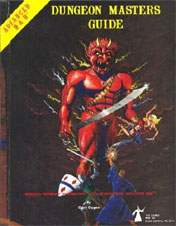 I’ve been spending quite a bit of time delving through the 1st Edition Dungeon Master’s Guide recently. Which means I’ve spent more than my fair share of time staring at the cover… which I have always hated.
I’ve been spending quite a bit of time delving through the 1st Edition Dungeon Master’s Guide recently. Which means I’ve spent more than my fair share of time staring at the cover… which I have always hated.